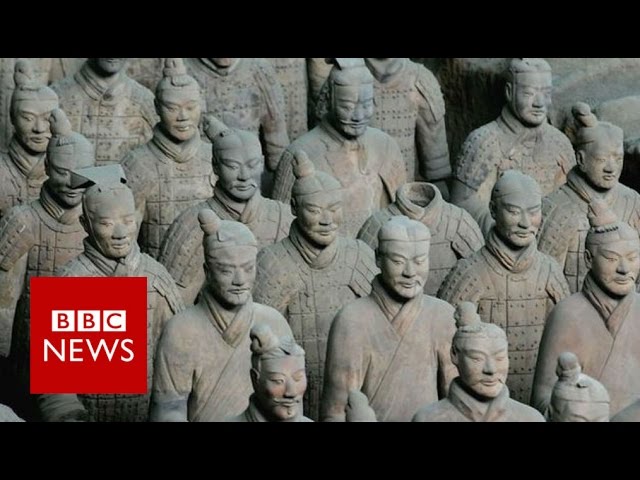The Terracotta Army is one of the most iconic archaeological discoveries of all time. The army, which was discovered in 1974, is a collection of over 8,000 life-sized terracotta figures, crafted in the likeness of soldiers, horses, chariots, and other figures from the Qin dynasty (221–206 BCE). The terracotta army was created to guard the tomb of the first emperor of China, Qin Shi Huang, and has since become one of the most famous archaeological sites in the world.
The terracotta figures were discovered by a group of local farmers who were digging a well near the city of Xi’an in the Shaanxi Province of China. When they first discovered the figures, they had no idea what they were or what they were for. It wasn’t until archaeologists arrived at the site and began to excavate that the significance of the terracotta army was revealed.
The terracotta army is believed to have been created by the emperor Qin Shi Huang himself, and was intended to protect him in the afterlife. The figures were made from a combination of clay and other materials, and were painted with bright colors. Each figure is unique, with its own facial features and clothing. The army includes a variety of figures, including archers, infantrymen, charioteers, and cavalrymen.
The Significance of the Terracotta Army
The terracotta army is an important archaeological discovery for several reasons. Firstly, it provides a unique insight into the life and times of the Qin dynasty. The figures provide a vivid picture of the technology, artistry, and craftsmanship of the period. Additionally, the terracotta army gives us a glimpse into the belief systems and religious practices of the Qin dynasty, and provides a valuable insight into the culture of the time.
The terracotta army is also significant because it is one of the earliest examples of mass-produced art. The figures were made using a variety of techniques, including molding, casting, and firing. This suggests that the Qin dynasty had a highly developed system for creating large-scale works of art. The figures are also a testament to the skill and craftsmanship of the ancient Chinese artisans who created them.
The Excavation of the Terracotta Army
Since the discovery of the terracotta army in 1974, archaeologists have been excavating the site and piecing together the story of the Qin dynasty. The excavation of the site has revealed many other artifacts and remains, including weapons, armor, chariots, and even a chariot with four horses. The excavation has also revealed the remains of a palace and several other structures, which suggest that the emperor Qin Shi Huang was buried in a complex and elaborate tomb.
The excavation of the terracotta army is ongoing, and archaeologists are still uncovering new information about the Qin dynasty and its culture. The figures provide a unique insight into the life and times of the period, and have become a symbol of the Qin dynasty’s legacy.
Conclusion
The terracotta army is one of the most important archaeological discoveries of all time. The figures provide a unique insight into the life and times of the Qin dynasty, and are a testament to the skill and craftsmanship of the ancient Chinese artisans who created them. The excavation of the site is ongoing, and archaeologists are still uncovering new information about the Qin dynasty and its culture. The terracotta army is an important archaeological discovery, and will continue to provide valuable insight into the life and times of the Qin dynasty for many years to come.


0 Comments